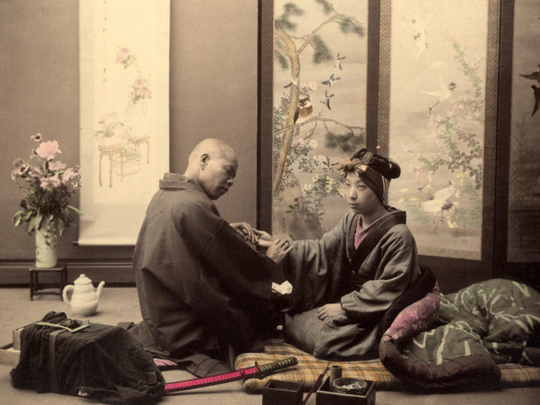
The beginning of the year saw the international media having a field day when Taro Aso, the finance minister of Japan, made a statement that the elderly should be allowed to “hurry up and die” to relieve pressure on the state to pay for their medical care.
Getting past the outrage may be difficult for those on the wrong side of 60, but the truth is that Japan is an ageing nation, with the number of people above 65 years increasing from 10 per cent of the population in 2000 to 20 per cent in 2010, according to Euromonitor International.
The flip side is that the low birth rates and a declining ratio of productive population to ageing population have created a greater demand for health-care services, and conditions are ripe for another burgeoning industry — medical devices.
The demand for foreign-produced medical equipment, devices and supplies (Meds) has increased significantly over the past few years.
In 2007, $81.6billion (about Dh299 billion) worth of Meds were traded globally, which grew to reach $116 billion by 2011, with an annual growth rate of 9.3 per cent. The top ten exporters held a total share of 77 per cent with the US at 24 per cent and Japan with a total share of 5 per cent, says Imad U Bokhari, Leader, Healthcare, Mena Transaction Advisory Services, Ernst and Young.
Japan will see spending on all medical care swell to 52.3 trillion yen (about Dh1.9 trillion) by 2025 from 37.5 trillion yen in 2010, according to government estimates, reported Bloomberg in March. But this expenditure will fuel the global medical device, technology and equipment business, which will be worth more than $348.6 billion by 2016, up from $307.7 billion last year, stated the same report.
A lucrative unit
It is evident how lucrative the sector is in Fujifilm’s growth figures. The Japanese technology brand’s health-care arm is active in prevention, diagnosis and treatment and registers annual medical business turnover figures of $3 billion. The target is to achieve $10 billion by 2018.
Another entity is Omron Healthcare, a company that has enjoyed consistent double-digit growth over the past years, with more than 60 per cent of its products sold outside Japan. “The Middle East market is an important growth region for Omron Healthcare,” says Shahzad Rana, Sales Director, Omron, Middle East, Turkey and Pakistan. “In many product categories the Middle East is outperforming other regions. This effect is driven by multiple factors, such as the increase of lifestyle-related diseases such as hypertension and diabetes, as well as the increased awareness that monitoring personal health can help people lead healthier lives.” Omron Healthcare holds a strong position in the core product categories of blood pressure monitors and nebulisers with a market share in the Middle East region that reaches over 40 per cent.
So why does the world seem to prefer the made in Japan label when it comes to medical devices and equipment? “First of all, the biggest benefit of Japanese products is the reliability factor,” says Masaharu Morita, Head of Medical Division, Fujifilm Middle East and Africa. “No downtime, coupled with stringent quality control measures and strict Japanese manufacturing policy make our products some of the best in the world.”
Forging partnerships
Sincerity, strong after-sales support and educational training for hospital staff and the medical fraternity also go a long way in building long-term partnerships between Japanese medical-equipment providers and customers, says Morita.
But these aren’t the only factors contributing to this high-growth trajectory. “The relationship between the growth in health-care expenditure and the import for the Meds market is strong. In most cases, the Meds import market will increase in countries where health-care expenditure is either on the rise or expected to grow in the coming years,” points out Bokhari.
The Mena region and more specifically the GCC is part of this major growth market. Despite being a smaller market in comparison to Asia, Europe and North America, the GCC represents significant growth prospects to those who wish to enter and capitalise on the opportunities.
Established brands
“Housing some of the most renowned brands such as Sony, Panasonic, Hitachi, Mitsubishi, etc. and having an existing established distribution infrastructure in the region may provide some of the key ingredients for the recipe that can be used to further enhance market penetration in a geography that is likely to increase significantly in coming years,” adds Bokhari.
Mena import market for Meds represents around 3 per cent of the global market. In 2007, $2.16billion worth of Meds were imported by Mena countries. This grew at a compound annual growth rate (CAGR) of 8 per cent and reached $2.9 billion by 2011, as reported by Ernst and Young.
Japan is slowly gaining ground in the GCC while increasing its share of total imports over the period 2007-2011. It has seen significant success in Bahrain, Qatar and Kuwait, where imports from Japan have increased at a CAGR of 57 per cent, 47 per cent and 18 per cent respectively, over the period 2007-2011. In the UAE the overall import of Meds grew at a CAGR of 7 per cent while Japanese exports to the UAE grew at 6 per cent, slightly slower than the average growth in total Meds imports.
Vibrant growth market
“Nowadays, many emerging markets such as the Bric nations (Brazil, Russia, India and China) are growing rapidly but we are seeing an especially vibrant growth in the Middle East,” says Morita, where customers prefer high level products and are willing to pay the high price for it. Since established in 2009, Fujifilm Mena has witnessed a rapid increase in its medical radiology business from $27 million in 2009 to a targeted $100 million in 2013.
It’s obvious that as the lure of new markets continues to call and with the prospect of turning the albatross of an ageing nation into a lucrative business option, Japanese medical equipment companies have nothing to fear.






